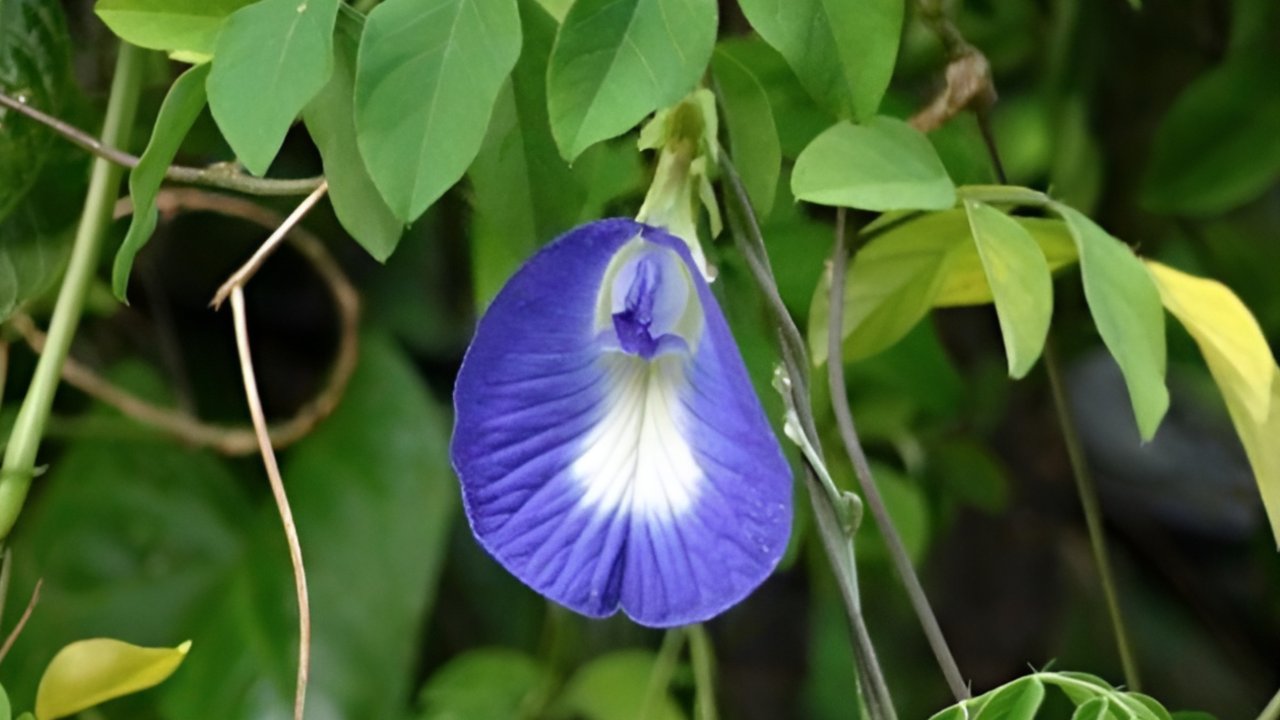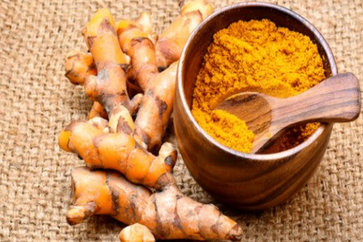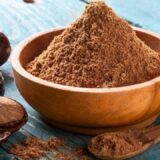Shankhpushpi: Benefits of Its Flower, Leaves, Roots & Seeds
Shankhapushpi (Convolvulus pluricaulis) is a well-known herb in Ayurveda, celebrated for its potential benefits in enhancing mental health and cognitive functions. It is a creeping plant belonging to the Convolvulaceae family and is commonly found in the Indian subcontinent. 
Shankhapushpi has been used for centuries as a traditional remedy for improving memory, concentration, and overall brain function. The herb is believed to have nootropic properties, meaning it may help support memory retention and enhance mental clarity.
It is also known for its calming effects on the mind, helping to alleviate anxiety, stress, and mental fatigue. In addition to its cognitive benefits, Shankhapushpi is traditionally used to promote mental well-being and emotional balance, often used in Ayurvedic formulations to reduce irritability and improve focus.
Shankhapushpi Indian Names
- Sanskrit: Shankhapushpi
- Hindi: Shankhpushpi, Aparajit
- Urdu: Sankhali
- Punjabi: Shankhpushpi
- Bengali: Sankhapuspi
- Gujarati: Shankhavali
- Kannada: Bilikanthisoppu
- Malayalam: Krsna Kranti, Vishnukranthi,
- Marathi: Shankhabela
- Oriya: Krishna-Sankranti
- Tamil: Sanghupushpam, kakkurattai
- Telugu: Shankhapushpi
Name In Part of World
- Australia: butterfly-pea
- English: English speed wheel
- French: Honte
- German: Blaue clitorie
- Portuguese: Clitoria azul
- Spanish: Bejuco de conchitas
- Brazil: Cunha
It is also known by other names such as azulejo, bandera, conchita azul, campanilla, cordofan-pea, choroque, papito, zapotillo, etc.
Ayurvedic view
Shankhapushpi is indigenous and considered one of the very important herbs in Ayurveda. According to Ayurveda, Shankhapushpi is a pungent, alternative tonic, bitter, brightens intellect, improves complexion, increases appetite, useful in biliousness, epilepsy, bronchitis, teething troubles of infants, etc.
It is regarded as alexiteric and tonic to improve memory and to tone the brain. From ancient times in India, people of all age groups (especially students, teachers, and philosophers) always have tried Shankhapushpi. It is also one of the best herbs that are used for enhancing beauty and helps in nourishing all the layers of skin.
Shankupushpam or Blue pea flowers are mentioned in a variety of synonyms in the books of Ayurveda. Shankupushpam flowers and plants are mentioned in most of the old Ayurvedic scriptures for their herbal remedy.
The are many synonyms for Shankupushpam some of the common ayurvedic synonyms are aparajita are mohanasi, supuspi, Sveta, mahasveta, girikarnika, ardrakarni, gokarnika, sephanda, vishnukrantha, etc. Also, the flower is known as oral, malayamukki, Kakkanam, etc.
Parts Of The Plant Used
In Ayurvedic medicine, Shankhapushpi (Convolvulus pluricaulis) utilizes various parts of the plant for their therapeutic properties. The following are the key parts of the plant that are commonly used:
1. Plant: The whole plant is sometimes used in traditional formulations, especially in powdered or decoction form. It contains active compounds believed to support mental clarity and reduce stress.
2. Leaves: The leaves of Shankhapushpi are the most commonly used part in Ayurvedic preparations. They are believed to have neuroprotective properties, promoting memory enhancement and cognitive function. The leaves are often dried and powdered or used to make herbal teas and extracts.
3. Flowers: The flowers of Shankhapushpi are also utilized in some formulations, known for their calming effects on the mind. They are believed to have a role in reducing anxiety and improving emotional well-being, contributing to the herb’s reputation as an adaptogen.
4. Roots: The roots of Shankhapushpi are sometimes used in traditional medicine, though they are less commonly incorporated than the leaves and flowers. They are thought to have soothing properties for the nervous system and may help with conditions like insomnia and mental fatigue.
5. Seeds: The seeds of Shankhapushpi are used less frequently, but they are believed to have similar properties to the leaves, supporting mental clarity and improving memory retention.
6. Ashes: In some Ayurvedic practices, the ashes of the plant, particularly the burnt remnants of the whole plant or its parts, may be used in specific formulations. These ashes are thought to have therapeutic effects, especially in treating conditions related to mental stress and cognitive decline.
Each part of the plant contributes to Shankhapushpi’s broad range of medicinal properties, but the leaves and flowers are most commonly favored for their pronounced impact on mental health.
Ayurveda Properties
- Rasa: Katu, Kashaya
- Virya: Ushna
- Guna: Guru, Sara, Snigdha, Pichchila
- Vipaka: Madhura
- Dosha: Balances and alleviates all the three doshas viz Vata, Pitta, and Kapha
- Karma: Medhakrita, Svarakara, Grahabhutadi doshaghna, Vashikaran Siddhi
Ayurveda Medicinal Properties
In Ayurveda, Shankhapushpi (Convolvulus pluricaulis) is regarded as a versatile herb with a wide range of medicinal properties that cater to both mental and physical health. Here’s a breakdown of its key Ayurvedic medicinal qualities:
1. Medhya (Promotes intellectual capacity): Shankhapushpi is primarily known for its cognitive-enhancing properties. It is believed to improve memory, learning ability, and intellectual capacity, making it a common ingredient in formulations aimed at supporting brain health and mental clarity.
2. Swarakarini (Improves voice): It is traditionally believed that Shankhapushpi can enhance the quality of the voice, making it clearer and more resonant. This property may be particularly beneficial for individuals who rely on vocal communication, such as singers or public speakers.
3. Kantida (Enhances the aura of the body and gives it a healthy look): Shankhapushpi is thought to have a beautifying effect on the body, improving skin tone and overall appearance. This attribute is often linked to its rejuvenating qualities, which promote physical health and vitality.
4. Grahabhootadi Doshaghni (Useful in diseases of supernatural origin): In traditional Ayurvedic belief, Shankhapushpi is said to have protective qualities against ailments thought to arise from supernatural or spiritual causes. It is believed to help balance energy and protect the individual from malefic influences.
5. Rasayani (Rejuvenates the body): As a rasayana herb, Shankhapushpi is known for its rejuvenating effects on the body and mind. It helps to nourish and revitalize tissues, promote longevity, and improve overall vitality, especially in cases of aging or weakness.
6. Unmadaghna (Alleviates insanity and emotional instability): Shankhapushpi is often used in the treatment of mental disorders such as anxiety, depression, and madness. It is thought to calm the nervous system, stabilize emotions, and restore mental balance, making it a valuable herb for promoting emotional well-being.
7. Majjadhatu Rasayana (Rejuvenates the nervous tissue): This property refers to Shankhapushpi’s ability to rejuvenate the nervous system (majja dhatu) and improve its functioning. It is often used in formulations that aim to nourish and protect the nerves, supporting long-term mental health and cognitive function.
8. Vrishya (Aphrodisiac): Shankhapushpi is considered to have aphrodisiac properties, enhancing sexual vitality and stamina. It is believed to improve libido and overall reproductive health, making it useful for both men and women in Ayurvedic treatments.
9. Pachambala (Increases the strength of the digestive system): This property refers to Shankhapushpi’s ability to strengthen digestion. It is believed to enhance the digestive fire (Agni), promote better nutrient absorption, and prevent digestive issues such as bloating or constipation.
10. Chedana (Laxative): Shankhapushpi is also recognized for its laxative properties, helping to regulate bowel movements and relieve constipation. It is often included in formulations aimed at cleansing the digestive system and promoting gastrointestinal health.
11. Nidrajnana (Promotes sleep): Due to its calming and soothing effects on the nervous system, Shankhapushpi is used as a natural remedy for insomnia and sleep disorders. It helps induce restful sleep by relaxing the body and calming the mind, making it particularly useful for those experiencing stress or anxiety.
These multifaceted medicinal properties make Shankhapushpi a prized herb in Ayurveda, used to treat a wide variety of mental, emotional, and physical ailments, while also promoting overall well-being and vitality.
Ayurvedic Formulations
There are many ayurvedic formulations containing Shankhpushpi as a single drug or in combination with other drugs available in the Indian market.
It is generally advertised for “memory enhancement”. Some of the important Ayurvedic formulations using the herb are given below:
Shankupushpam Plant Uses
- The herbal extracts of plants are seen to possess spermatogenic properties, so it can be beneficial in cases of sperm debility.
- It is used to treat urinary system ailments.
- It is known to have cooling effects that alleviate symptoms of vomiting, burning sensations, and thirst which is common during fever.
- Plant extracts can be used for ailments in the respiratory system like cough and cold, it is also used to prevent irritation of respiratory organs as it has expectorant properties.
- The Herbal extracts of the plant are used for the treatment of Asthma.
- The Herbal extracts have tranquilizing effects and are thus used for syncope, vertigo, etc.
- It is used for the nervous system and brain-related ailments.
- Herbal extracts are also used for treating the digestive system and other ailments such as jaundice, constipation, piles dyspepsia, etc.
- It is also used for treating the circulatory system of blood.
- It is also used for treating smallpox.
- The hemostatic effects of shankupushpams are beneficial for piles mostly bleeding piles.
- A decoction of this herbal plant is used for cleaning wounds and it has the ability to prevent pus formation.
- Plant extract is known to be used for alleviating pain and swelling.
- In Ayurveda, the Shankhapushpi plant is also used for the treatment of epilepsy.
- Plant extract avoids fluid retention in the body and supports digestion.
- The Shankhapushpi plant extract is well known for treating insanity and hematemesis.
- The ethanolic extract of Shankhapushpi herb reduces the levels of NEFA defined as “nonesterified fatty acid” which is the main cause of death due to cardiac arrest.
Shankupushpam Leaves Uses
- Leaves of Shankupushpam plants can be ground and mixed with salt for applying over swellings.
- Powder of leaves is also used for treating brain disorders.
- The leaves of white flower shankupushpams are mixed with salt made into a paste and applied for retroauricular adenitis.
- The ground leaves mixed with salt are used for applying over swellings.
- The past of Leaves of white flower plants mixed with salt is used for applying on glandular swellings and cervical adenitis.
- The fresh leaf juice mixed with ginger juice is an effective remedy for controlling excessive sweating.
- The powdered leaves are used for treating brain disorders.
- Leaves of the Shankhapushpi plant are used to treat bronchitis and asthma.
Shankupushpam Flower Uses
- A gram of Shankupushpam flower powder if taken daily with honey can be useful for uterus bleeding problems.
- The blue flowers of shankupushpams are used for food coloring for rice and other recipes in some of the Asian regions.
Shankupushpam Roots uses
- The roots of grounded shankupushpams are used with ghee or butter, two to three times daily to increase memory and intelligence.
- The root extracts of shankupushpams are used for eye, and throat infections, ulcers, and urinary.
- For migraines, the root juice extracts are poured through the nostrils.
- The roots of the white-flowered shankupushpams are used as a medicinal paste for skin diseases. Extract of the root is useful to treat throat infections, eye, ulcers, urinary troubles, etc.
- For migraine, the root juice extracts are poured through the nostrils.
- The root juice with milk is beneficial in sticky phlegm cough and it can also relieve asthma problems.
- The plant root is an herbal remedy to treat childhood fever.
Shankupushpam Seed Uses
- The seeds are fried in ghee and powdered and consumed with hot water for skin diseases.
- The crushed seeds are mixed with honey and are used for applying Tonsillitis
Top 10 Shankupushpam Health Benefits
Shankhapushpi (Convolvulus pluricaulis) is a remarkable herb with a wide range of health benefits. Its ability to enhance cognitive function, reduce stress, support cardiovascular health, improve skin, and aid in digestion makes it a valuable addition to holistic wellness practices.
Resources:
- Role of Shankhpushpi (Convolvulus pluricaulis) in neurological disorders: An umbrella review covering evidence from ethnopharmacology to clinical studies(1)
- Protective Mechanisms of Nootropic Herb Shankhpushpi (Convolvulus pluricaulis) against Dementia: Network Pharmacology and Computational Approach(2)
- Comparative pharmacognostical investigation on four ethanobotanicals traditionally used as Shankhpushpi in India(3)
- Neuropharmacological evaluation on four traditional herbs used as nervine tonic and commonly available as Shankhpushpi in India(4)


























I am a senior citizen. I am growing Shankapushpi plant at home. Can eating 1 or 2 leaves help?
Or is special extraction required?
Thanks for any other information.
ya u can eat more than 2 it gs very good
Very useful article
Thank you for your correction in the picture and taking my suggetion in right direction.
Very nice article about such a powerful herb of Ayurveda. The variety of therapeutical uses that this plant has makes it a must-have plant in your backyard. Thanks for posting information about this plant.
Is the photo correct. Sankupushpi is supposed to be of the shape of shanku, little elliptic. Please verify. Thanks.
Thanks for your observation